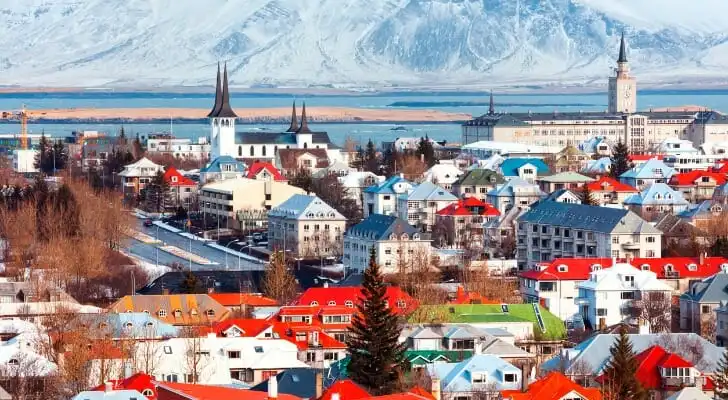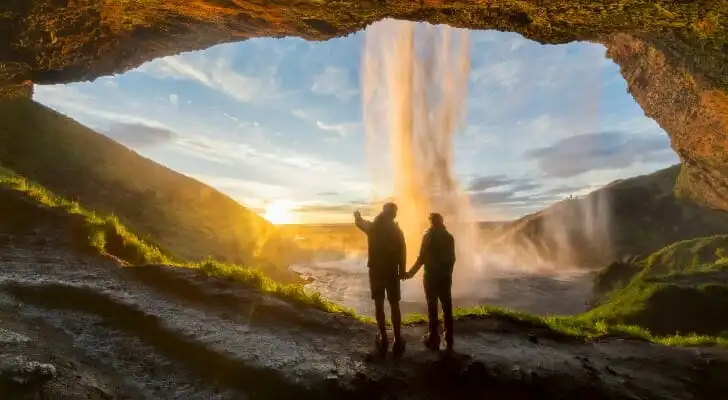Many retirees are traveling abroad to live out their post-work lives these days, and the island of Iceland is becoming an increasingly popular locale. While it’s not as cost-effective as somewhere like Mexico or South America, Iceland’s mythic natural beauty, rich history and plentiful English speakers make it an attractive destination. However, retiring in Iceland or any foreign country can be a bit complex, and you’ll want to have all the logistics settled before you jet off.
If you’re considering retiring overseas, you may need to work with a financial advisor to make sure you’re prepared financially.
Average Cost to Retire in Iceland
Affordability is something of a mixed bag in Iceland. Rent is surprisingly reasonable, even in the biggest cities. A one-bedroom apartment in the middle of Reykjavik will cost you around $2,216 a month, on average. If you were to look elsewhere in the country, you could reasonably take another $200 off that price. Because the country is a remote island, however, other products that must be imported are rather expensive. Things like milk, ground beef or even blue jeans are much more expensive than they are in the U.S.
According to estimations from Numbeo, a retired couple living in a one-bedroom apartment in Reykjavik can expect to live on roughly $3,000 a month. This includes rent, utilities, groceries, dining out, transportation and any help around the house you might need. This figure doesn’t include healthcare — more on that later.
There are a few habits Icelandic people gravitate toward to help avoid the elevated prices. One of the biggest is to avoid driving when possible due to the high price of gasoline. If you’re moving to Iceland to retire, consider skipping the car entirely and relying instead on public transportation and cheap airfare.
How to Retire in Iceland – Residence Permits
Citizens of the U.S. don’t need to obtain visas before entering Iceland. However, if you’re planning on staying in Iceland for longer than 90 days – and presumably you are if you’re retiring there – you’ll need to apply for an Icelandic residence permit.
Applying for a residence permit of any kind involves satisfying several basic requirements. First, you must prove you can financially support yourself in Iceland without relying on welfare. For a retired couple, this means proving you can spend at least 270,825 Icelandic kronur ($2,376) a month to support yourself.
You’ll also need to provide health insurance that will be valid in Iceland (some American health insurances will work here) and prove that you have a place of residence in Iceland. Finally, you’ll need to prove that you don’t have a criminal record or any open case that could result in more than three months in jail.
Those are just the basic requirements. Each type of residence permit will have its additional requirements. If you want to retire in Iceland, you’ll eventually need a permanent residence permit, which you can apply for after living in the country continuously for four years. To apply for a permanent residence permit, you will have to have been granted a different permit for the prior four years. To sort out all the requirements and find out which specific residence permit you could be eligible for, it may be beneficial to speak with a lawyer.
How to Retire in Iceland – Weather

Although not completely true to its name, Iceland does see plenty of cold temperatures in the fall and winter. Temperatures in the fall will be mostly be in the 30s Fahrenheit, but they can fall as low as -20 degrees in the winter, with plenty of snow and wind to go with it. You’ll want to fill out your cold-weather wardrobe and invest in some well-made boots if you intend to retire in Iceland.
Fortunately, it isn’t winter year-round in Iceland. The country has four distinct seasons, and temperatures can get up to the high 70s in the summer, although you can probably expect temperatures to hover in the 50s for the most part. Summer is also when you can see the famous Midnight Sun. That’s when Iceland experiences continuous sunlight on the summer solstice due to its proximity to the North Pole. The inverse is true around the winter solstice, and limited sunlight is a fact of life throughout the winter months.
How to Retire in Iceland – Healthcare
Iceland provides universal healthcare to all official residents of the country. However, you’ll need to be a resident for at least six months to be eligible. You’ll need to purchase health insurance coverage for at least your first six months before you can obtain your residency permit.
If you need to seek medical attention, you can choose between healthcare clinics, hospitals and health institutions. Clinics typically have lower prices than hospitals but aren’t equipped for serious medical emergencies. Hospitals are equipped for emergencies, but you’ll need a referral to see a doctor for anything else. Health institutions provide primary care services and occasionally employ specialists. There are 12 different health institutions throughout the country. All of these facilities receive public funding. There are no private hospitals in Iceland.
How to Save for Your Retirement
Saving for retirement is an effort that usually takes decades to realize in full. Before you can start the process, however, you’ll have to decide what kind of lifestyle you’re looking for in your retirement. Once you make that decision, you can begin to calculate how much you’ll need in savings to make that plan a reality. It will be much easier to start saving in earnest once you have at least a rough figure that you’re building toward.
If you’ve had a career in the United States, you are likely eligible for some type of Social Security benefit. Also, you may have some sort of pension income in retirement if you’re a government employee or a teacher. You’ll still need to save up to supplement this income, though. The most popular options to do so are either an individual retirement account (IRA) or a 401(k) plan. Note that you can only access a 401(k) plan through your employer.
The most crucial element of retirement saving is making sure you start early. If you begin saving while you’re young, then you will reap the benefits of compound interest throughout your career. Because your money will make money of its own along the way, you won’t have to save as much.
Bottom Line

Iceland brings plenty to the table as a place to settle down for your retirement. You’ll have access to a great healthcare system, interesting history and even a few volcanoes. Certain things can be a bit pricey when living on a small island. As long as you’ve saved up accordingly, though, covering your costs shouldn’t be an issue. If you don’t mind the cold and paying a little extra for your groceries, then you may want to consider an Icelandic retirement.
Tips for Saving for Retirement
- Consider using a professional to help you make a plan. A financial planner can help you navigate retirement planning, taxes and planning for your lifestyle goals. Finding a financial advisor doesn’t have to be hard. SmartAsset’s free tool matches you with vetted financial advisors who serve your area, and you can have a free introductory call with your advisor matches to decide which one you feel is right for you. If you’re ready to find an advisor who can help you achieve your financial goals, get started now.
- Avoid withdrawing money from your retirement accounts. Letting your investments compound over time and uninterrupted, is the best way to save for retirement. Set aside an emergency fund to avoid needing to use money from your 401(k) or IRA in a pinch.
Photo Credit: ©iStock.com/DieterMeyrl, ©iStock.com/powerofforever, ©iStock.com/powerofforever
